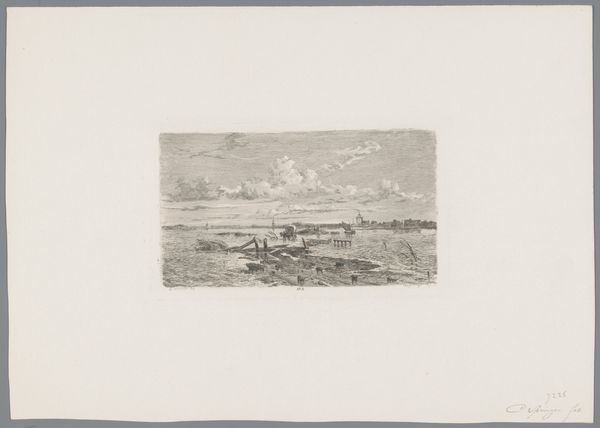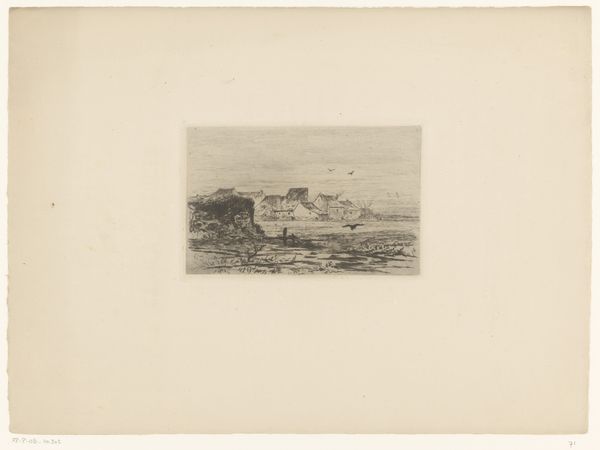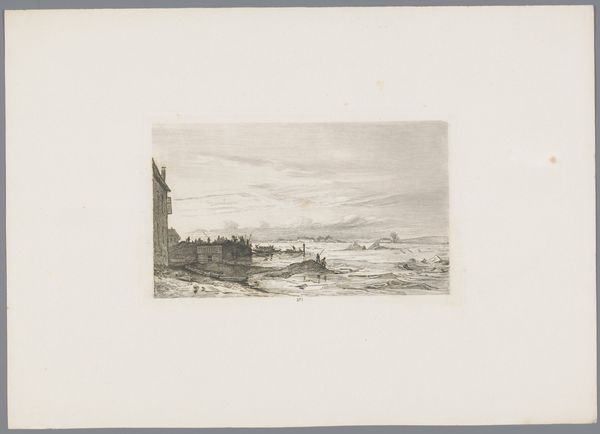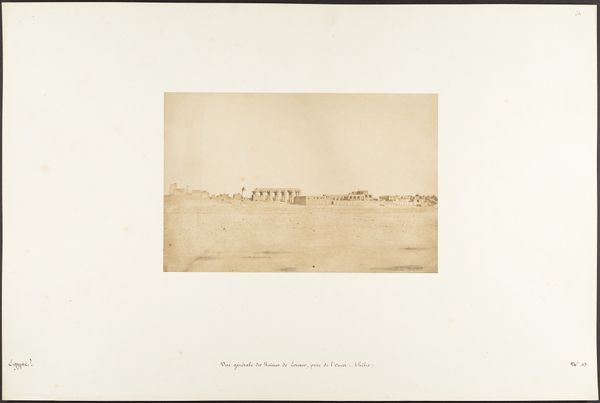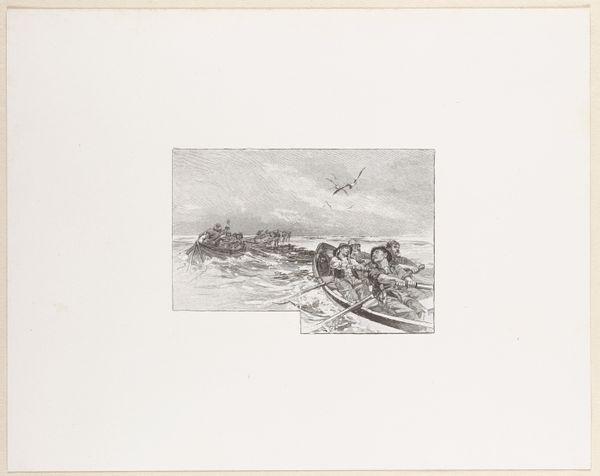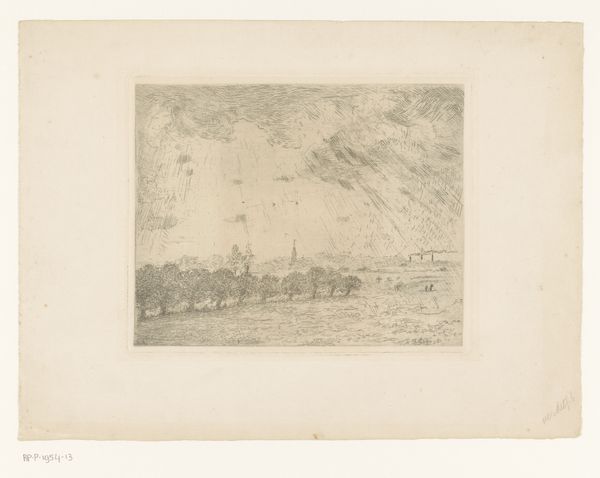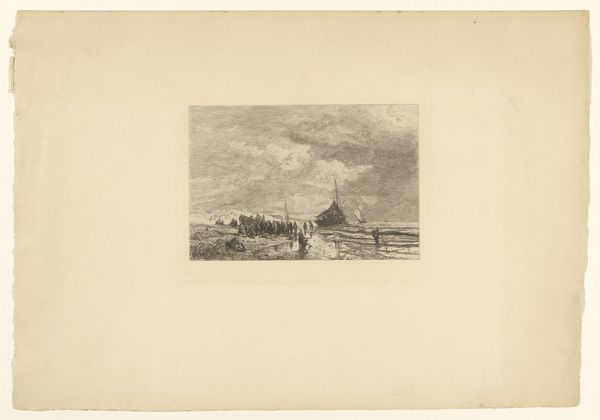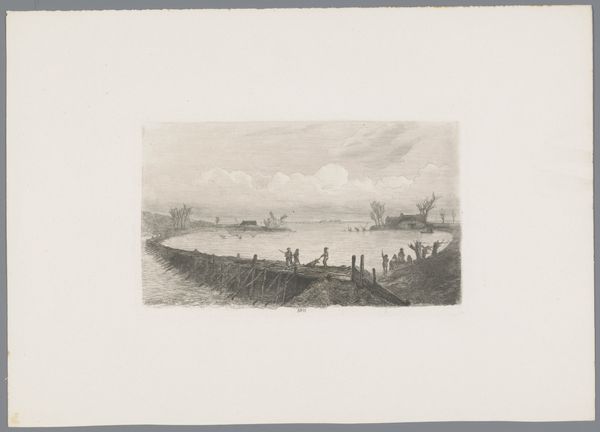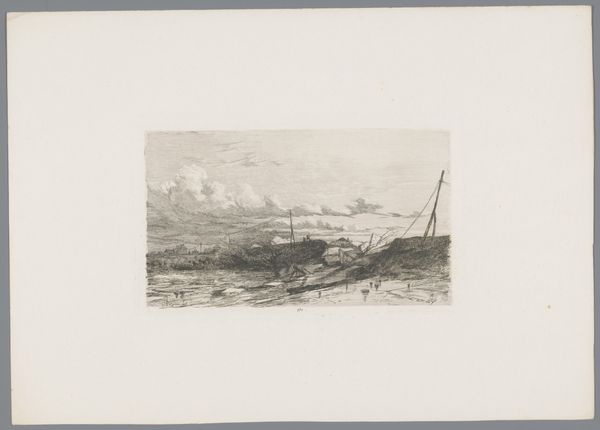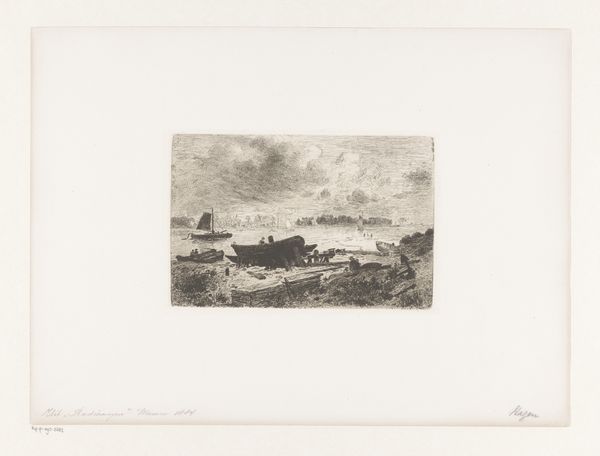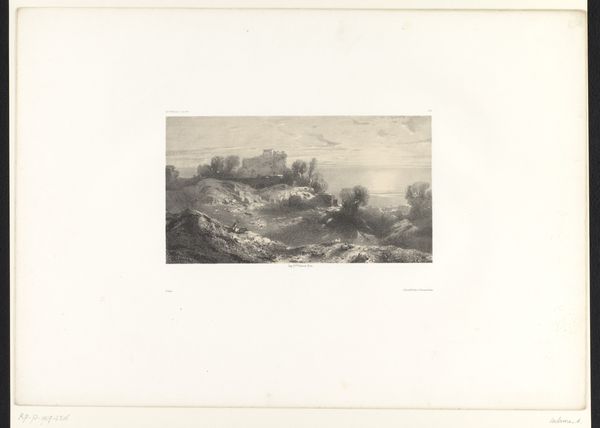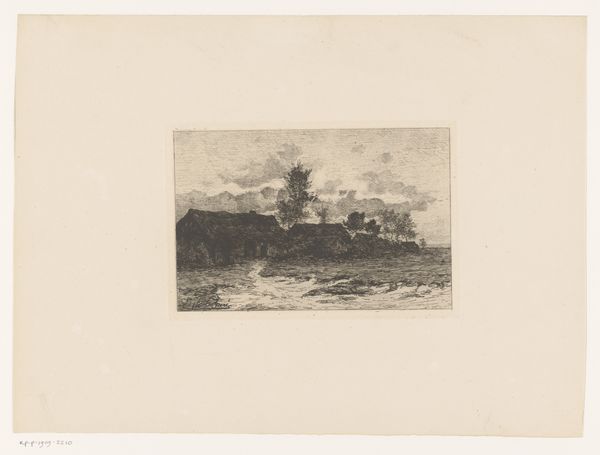
print, etching, paper
#
ink paper printed
# print
#
etching
#
landscape
#
paper
#
genre-painting
#
realism
Dimensions: height 198 mm, width 278 mm
Copyright: Rijks Museum: Open Domain
Editor: This is Félix Brissot de Warville's 1881 etching, "Schaapsherder met kudde," or "Shepherd with Flock." It feels incredibly textural despite being a print. What's striking is how the density of the etched lines creates a tangible sense of form. How would you interpret this piece purely from a visual perspective? Curator: Indeed. Immediately, the hatching and cross-hatching command attention. Note how the artist employs it to delineate depth and volume. Observe the shepherd and the sheep – the variation in line weight and density models the play of light, accentuating their three-dimensionality, wouldn't you agree? Editor: Yes, the light is captivating, how the sky is almost white and the animals seem much darker in contrast. Does that inform its meaning, or just describe it visually? Curator: Precisely. One might further deconstruct the formal elements: the distribution of light, the organization of forms in space. Ask yourself, how does the tonal range--from the faintest grays to the richer blacks--articulate space and contribute to the overall visual balance? The almost mathematical relationship between light and dark directs our gaze and structures our experience. The strategic placements of light, form, and shadow construct not merely a scene, but a calculated visual field. Editor: I see it now, like a detailed study in texture and shape. I'm starting to see how line variations almost define form more than actual outlines do. Curator: Exactly, and how the relationship between each mark helps articulate the scene without overtly symbolic reference. The composition's integrity lies in its inherent visual mechanics. Editor: I never looked at prints so analytically before; it really pushes one to look more closely. Thanks for guiding me!
Comments
No comments
Be the first to comment and join the conversation on the ultimate creative platform.
